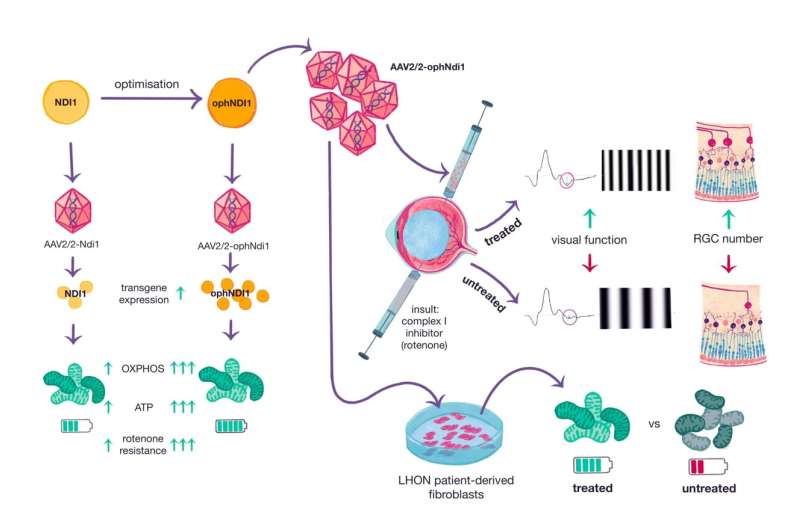
A gene therapeutic approach that shows promise for treating age-related macular degeneration (AMD) may also be effective in treating other eye conditions such as glaucoma. It provided benefit in three additional models of mitochondrial dysfunction, including cells taken from patients living with an optic neuropathy.
Researchers from Trinity have discovered that a potential new gene therapeutic approach may also be effective in treating patients living with other eye diseases in the future.
The work published in the journal Pharmaceutics details how the gene therapy (ophNdi1) boosts mitochondrial performance in retinal ganglion cells, the cells dysfunctional in diseases such as glaucoma.
The results are consistent with those observed, and previously published by the same group, showing benefit in age related macular degeneration (AMD) models and highlights the potential value of ophNdi1 for multiple eye diseases.
“Because a loss of retinal ganglion cells leads to sight loss in many conditions including inherited optic neuropathies and glaucoma, we are excited that this potential therapeutic approach could provide benefit to many patients in the future,” said Dr. Naomi Chadderton, first author of the research article and a scientist in Trinity’s School of Genetics and Microbiology.
“Our study shows that ophNdi1 is protective in three models of mitochondrial dysfunction. Notably, the optimization of the therapy, which is outlined in the study, allows for use of a lower therapeutic dose.”
Mitochondria are known as the “powerhouses” of the cell because they manage the production of energy, however researchers had previously discovered that their performance decreases in the retina of people with eye diseases. This link to a deterioration in sight led them to investigate the potential of therapies to rescue struggling mitochondria.
The gene therapy ophNdi1 uses a virus to access the cells that are suffering and deliver the code needed to give mitochondria a lifeline, enabling them to generate extra energy and continue to function in supporting vision.
Professor Jane Farrar, senior author of the research article and Professor in Trinity’s School of Genetics and Microbiology, said,
“Our work provides clear evidence supporting using this novel gene therapeutic approach for multiple eye disorders. It also suggests that the ophNdi1 therapeutic platform targeting mitochondrial dysfunction could have applications for other devastating conditions beyond the eye in which mitochondrial dysfunction is in play.”
Further work will need to be undertaken before the therapy can be administered to patients, but the research team hopes that will become a reality in the years to come.
Thomas Deane, Trinity College Dublin

